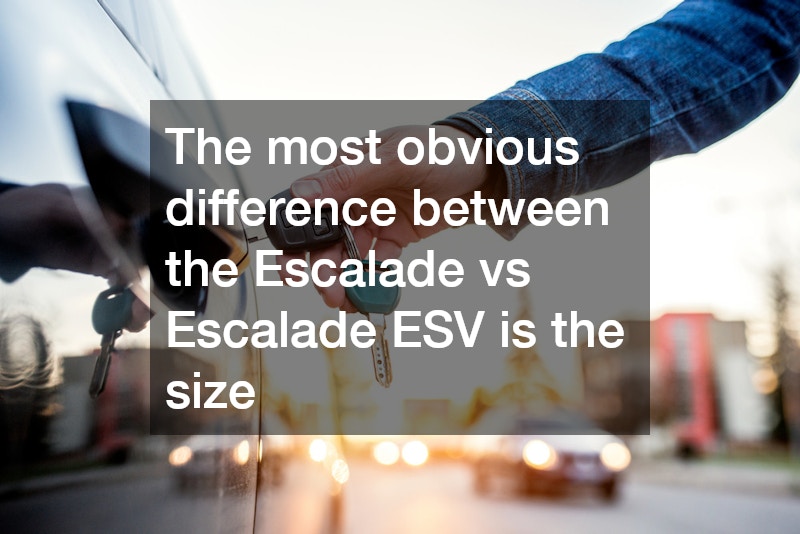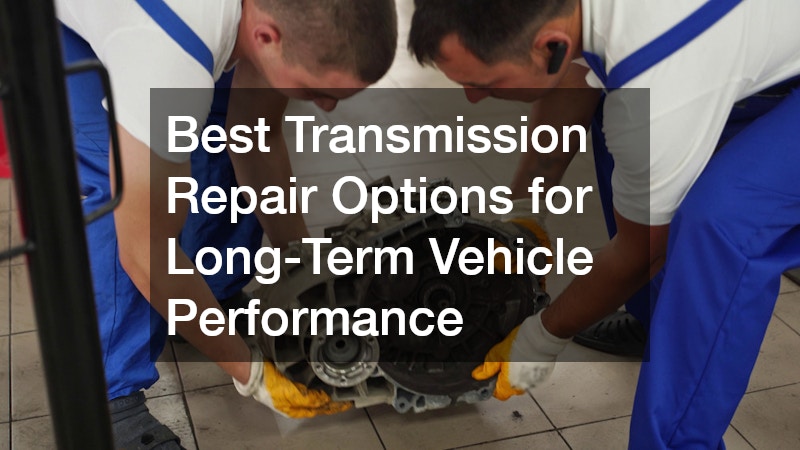
The Cadillac Escalade is a name synonymous with luxury, style, and power. For years, the Escalade has remained one of the most popular full-size luxury SUVs on the market, offering a perfect blend of high-end features, advanced technology, and impressive performance. But for those considering a Cadillac Escalade, there’s an important choice to make: Escalade vs Escalade ESV. While both vehicles share many similarities, there are key differences between the standard Escalade and the Escalade ESV (Extended Stretch Vehicle) that buyers should understand before making a decision.
In this blog, we’ll explore the major distinctions between these two models to help you determine which one is the best fit for your needs.
1. Size and Dimensions
The most obvious difference between the Escalade vs Escalade ESV is the size. The Escalade ESV is the larger version of the standard Escalade, designed to provide additional space for passengers and cargo. The ESV version is about 15 inches longer than the regular Escalade, measuring 227 inches compared to the 212 inches of the standard model. This added length primarily benefits the cargo area and third-row seating, making it an ideal choice for those who frequently need extra room.
While the standard Escalade offers plenty of space for families and cargo, the Escalade ESV takes it to the next level. The longer wheelbase of the ESV not only adds cargo capacity but also creates more legroom for passengers in the third row, making long trips more comfortable for everyone. If you regularly carry large loads or require more room for passengers, the Escalade ESV might be the better option.
2. Cargo Space
Cargo space is one of the biggest selling points of the Escalade ESV, particularly for those who need extra storage without sacrificing luxury or performance. With the standard Escalade, you get around 25.5 cubic feet of cargo space behind the third row, which is quite generous compared to other SUVs in its class. However, the Escalade ESV expands this to an impressive 41.5 cubic feet, giving you considerably more room to store luggage, sports equipment, or whatever else you need to bring along.
If you frequently transport large items or need to maximize your vehicle’s cargo capacity, the Escalade vs Escalade ESV debate tilts in favor of the ESV model. Additionally, with the rear seats folded down, the cargo space increases dramatically, making the Escalade ESV one of the most spacious SUVs on the market.
3. Passenger Comfort
Both the Escalade and Escalade ESV offer premium comfort and space for passengers, but the ESV’s extended length allows for more flexibility, particularly in the third row. The standard Escalade provides comfortable seating for up to seven passengers, with plenty of legroom in the first and second rows. However, the third-row seats in the standard Escalade are slightly more compact, making them best suited for children or shorter trips.
In contrast, the Escalade ESV’s third row offers more legroom and overall space, making it more comfortable for adult passengers, even on longer journeys. If you frequently travel with a full load of passengers, the ESV might be the more comfortable choice for everyone.
4. Towing Capacity
In the Escalade vs Escalade ESV comparison, both models come equipped with powerful engines and impressive towing capabilities. The standard Cadillac Escalade features a 6.2-liter V8 engine that produces 420 horsepower and 460 lb-ft of torque, and the Escalade ESV offers the same engine and powertrain options. Both vehicles are capable of towing heavy loads, making them excellent choices for families who need to tow trailers, boats, or recreational vehicles.
The towing capacity is nearly identical between the two models, with the Escalade capable of towing up to 8,200 pounds and the ESV up to 8,100 pounds when properly equipped. This small difference in towing capacity is largely due to the ESV’s added weight from its longer frame. Regardless, both vehicles offer robust towing abilities that are among the best in their class.
5. Fuel Efficiency
When considering Escalade vs Escalade ESV, it’s important to note that the larger size of the ESV comes with a slight trade-off in fuel efficiency. Since the Escalade ESV is heavier and longer, it tends to use a bit more fuel than the standard Escalade. Both models have similar engine options, but the standard Escalade generally achieves slightly better gas mileage due to its smaller size and lighter weight.
That said, both the standard Escalade and the Escalade ESV are designed to deliver a smooth, powerful driving experience, and fuel efficiency isn’t typically a primary concern for those purchasing a full-size luxury SUV. However, if maximizing fuel efficiency is a priority, the standard Escalade might offer a slight edge.
6. Price Difference
As you might expect, the Escalade ESV typically comes with a higher price tag than the standard Escalade due to its larger size and increased cargo space. The starting price for the Escalade ESV is usually a few thousand dollars higher than the standard model. However, the additional space and enhanced comfort may make it worth the extra cost for families or those who need the added room.
If budget is a key factor, the standard Escalade still offers plenty of luxury, space, and performance without the extra cost. However, for those who prioritize maximum space and comfort, the Escalade ESV’s higher price may be justified by the added benefits.
.





